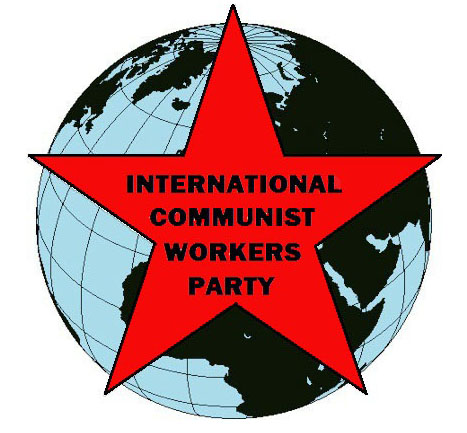
 |
FIGHT FOR COMMUNISM! |
International Communist Workers Party | |
The bosses’ mass media claim that “free and fair” elections will guarantee a society that serves the interests of the working class. Peace accords in El Salvador and South Africa required freedom fighters to turn in their guns. All weapons had to be in the hands of the state. Revolutionary organizations became electoral parties.
Those who had fought for freedom and equality had to trust that the state would act in their interest. This was a betrayal of the struggle. The state always acts in the interests of the ruling class. “Free and fair” elections don’t change that.
The working class needs communism. To get that, we must fight for political power, with guns in our hands. Soldiers and ex-soldiers will play a leading role in this struggle.

An example from US history
Four million people of African descent were freed at the end of the US Civil War in 1865. What came next was a period of sharp struggle. Northern capitalists tried to impose wage slavery and freed people resisted. Black Civil War veterans were key to this fight.
For nearly four hundred fifty years, enslaved Africans and their descendants worked as slaves. They grew rice, tobacco, indigo and cotton. They worked as cooks, servants, horse wranglers and blacksmiths. The fruits of their labor and the trade in their enslaved bodies created the capital that allowed US imperialism to become a dominant world power.
Enslaved Africans at first worked alongside Native American captives and British farmers displaced by English capitalist agriculture. After 1660 the colonists passed laws that made their slavery racial and permanent. It took a Civil War to end chattel slavery of Africans in the US. Escaped slaves, armed and fighting for freedom for themselves and their families, made the difference between victory and defeat.
During the Civil War, many slave-owners abandoned their plantations. In some places the Union Army seized the land. Freed people went into the Big House and took the food, cooking pots, clothes and furniture their former master had enjoyed. They distributed all this based on need. They ran off their former overseers. They organized collectively to divide up the land. They made plans to work the land and use its fruits to support their families and communities.
This was not what the Northern “emancipators” had in mind. Their plan was to institute wage-labor agriculture in the same crops—rice and cotton—that enslaved people had produced. Union troops moved in and took over the plantations. They either gave the land back to the slave masters or sold it to northern capitalists. Union Army officers imposed contracts and labor discipline at gunpoint.
Captain Charles Soule of Massachusetts, for example, was in charge of the Orangeburg, South Carolina district. He went through black communities, laying down the law of the new regime of wage slavery. “Some people must be rich, to pay the others, and they have the right to do no work except to look out after their property,” he told former slaves. “Remember that all your working time belongs to the man who hires you.”
Freed people refused to be re-enslaved. They refused to do extra work that would take them away from cultivating their household plots. They struggled for collective organization of work, where family and community members pooled their harvest, instead of each person being paid for their individual labor. They refused to see their labor as a commodity. They struggled against money wages and insisted on equal distribution of housing, clothing, and food.
Army veterans played a key role in the resistance to wage slavery. They organized armed groups that included freed people from various plantations. They held armed drills and marches. They fought against evictions, held strikes, and defended their communities against criminals. They didn’t put their trust in the Union Army or the Federal Government. These organizations took collective power into their own hands.
Eventually the militias became part of the Union Leagues. They continued to defend freed people against the landowners and the terrorism of the emergent Ku Klux Klan. But their illusions in the electoral process, like those of the class fighters in South Africa and El Salvador, blinded them to the nature of class rule. They concentrated on electing freedmen and their allies. Eventually their armed popular militias were banned. And when the Federal government withdrew US troops from the South in 1876, black communities were disarmed and defenseless.
Formerly enslaved people in the US fought for a society where they could be truly free, working and planning collectively and sharing equally what they produced. Armed veterans who had learned the power of collective disciplined action led the way. Their fatal error was in trusting elections and turning in their guns.
We won’t make the same mistake again.
Read more: The Work of Reconstruction: From Slave Labor to Wage Labor in South Carolina, 1860-1870 by Julie Savile